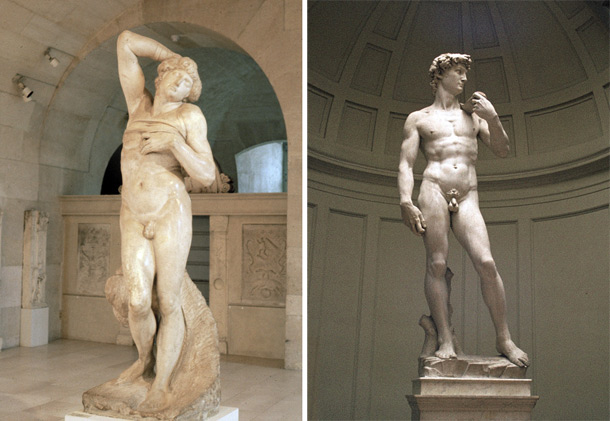

No human emotion can be causeless, nor can so intense an emotion be causeless, irreducible and unrelated to the source of emotions (and of values): to the needs of a living entity's survival. Art does have a purpose and does serve a human need; only it is not a material need, but a need of man's consciousness. Art is inextricably tied to man's survival-not to his physical survival, but to that on which his physical survival depends: to the preservation and survival of his consciousness."
Ayn Rand, from The Romantic Manifesto

This site is the home of that contingent of "freedom fighters of the mind" who are battling to clarify and present the detailed truth -- philosophically, psychologically, scientifically -- about how the arts provide sustenance for the soul.
[click HERE for more details]
It provides information and resources on:
- The centrality of philosophy for understanding the power of art, from Aristotle to Rand and points in between.
- Psychological issues as they relate to the arts, from Aristotle to Raymond to Magda Arnold to Rand.
- Theories of emotion and esthetic emotion, from Aristotle, Arnold and others.
- The scope of the Arts, and the distinctions between Fine Art and Decorative Arts and Industrial Design Arts.
- Perception theory as it relates to the Arts, from Aristotle to J.J. Gibson to Gombrich and others.
- Essays and quotes on key concepts in the Arts:
- Beauty
- Metaphysical emotions and metaphysical value judgments
- How our minds work in reaction to Artworks, etc.
- Beauty
Esthetics
Objectivity & Subjectivity in Art
by John Gillis
HTML / PDF
Esthetics
Mimesis and Expression in Ayn Rand's Theory of Art
by Kirsti Minsaas
PDF
Art Appreciation and Understanding - Kindle Book - 2017
Art in One Lesson: Understanding and Appreciating the Arts
by John Gillis
Amazon Link for purchase: Kindle link
Architecture - Kindle Book - 2018
Tidings of Joy & Comfort: Romanticism & Realism in Architecture
by John Gillis
Amazon Link for purchase: Kindle link
Psychology of Art
Objectivist Psychology: Sense-of-Life
by John Gillis
HTML / PDF
Music
On the Evolutionary Neuropsychology of Music
by Marsha Enright
HTML / PDF"
Architecture
An Introduction to Organic Architecture via the Obituary of Frank Lloyd Wright
by William Jordy
HTML / PDF"
Art and Psychology
If Emotions Are Not Tools of Cognition, What are They?
by Marsha Enright
PDF"
Sculpture
Metaphysics in Marble
by Mary Ann Sures, 1969 The Objectivist.
Link at Ayn Rand Institute site: Sculpture
Novels (writing about novels)
Ayn Rand:
--Basic Principles of Literature, 1968 (essay published in The Romantic Manifesto)
--The Art of Fiction, 1958 (published 2000)
Poetry
What is Poetry?
by John Enright III
PDF"
Plays
Discovering Great Plays: As Literature and as Philosophy
by Leonard Peikoff. Kindle link
Cinema
Coming.
Opera
Coming.
Ballet
Coming.
Aristotle:
- The Poetics (plain text)
- The Poetics (interpretation)
- Aristotle's key idea
- The Aesthetics of Aristotle -- a paper by George Lansing Raymond
George Lansing Raymond (an Aristotelian esthetician, who provides a rational perspective on the arts):
- biography at Wikipedia
- key writings on the web
- An exclusive [esthetics.cc] re-publication of G.L. Raymond's The Genesis of Art-Form.
- New York Times review of The Genesis of Art-Form from 1893:
- G.L. Raymond's obituary from the New York Times: